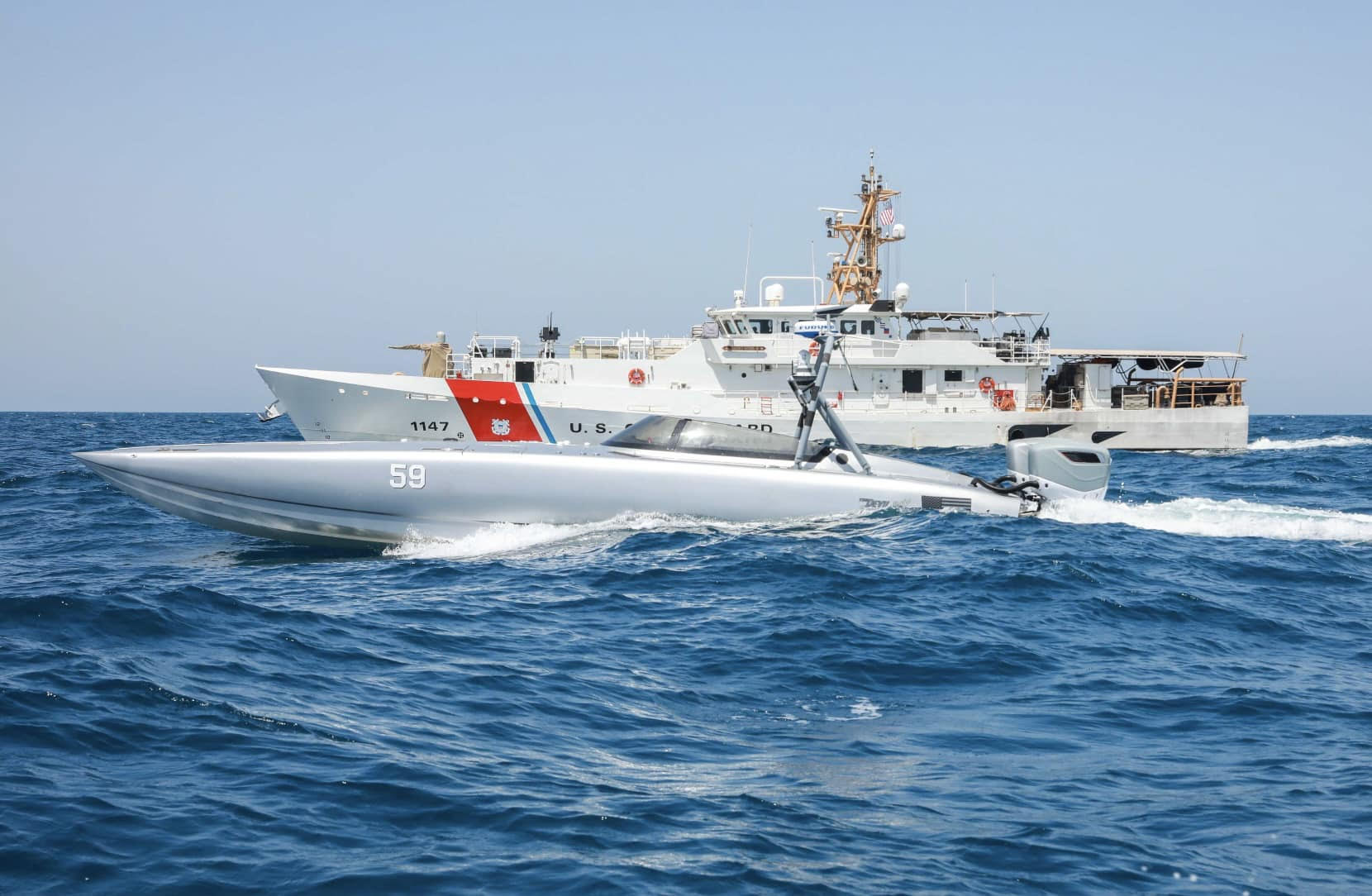Vignette for an Integrated Unmanned Solution Mission:
The Expeditionary Strike Group (ESG) in the Western Pacific is on routine patrol five hundred nautical miles from the nearest landfall.
An incident occurs in their operating area and the ESG is requested to: (1) obtain reconnaissance of a near-shore littoral area, associated bays and river accesses and (2) determine if the entrance to a specific bay has been mined to prevent ingress. The littoral coastline covers two hundred nautical miles.
This area must be reconnoitered within twenty-four hours without the use of air assets.
Command staff dispatches three LUSVs for the request mission.
Two LUSVs are each configured with four T38-ISR craft and the third LUSV is configured with four T38-MCM vessels.
The three LUSV depart the strike group steaming together in a preset autonomous pattern to a waypoint that is central to the ISR scan area.
At this waypoint, the LUSV will stop and dispatch the smaller T38 craft and then wait at this location for their return.
Two T38-ISR craft are launched from each of the two LUSVs carrying the ISR craft.
The autonomous mission previously downloaded specifies a waypoint location along the coast for each of the four craft.
Each of the four T38 craft will have a geographically confined ISR mission to cover.
Two T38-MCM craft are launched from the third LUSV.
The autonomous mission previously downloaded has them transit independently along different routes to two independent waypoints just offshore of the suspected mine presence area where they will commence mine-like object detection operations.
In this manner, each of the six craft will be transiting independently and autonomously to their next waypoint which will be the mission execution start point.
The objective is for each of the T38-ISR craft to complete their ISR scan and for the two T38-MCM craft to jointly scan the bottom and the water column for the presence of mine-like objects.
Even with the Expeditionary Strike Group well outside of littoral waters, the ESG Commander will have the results of the ISR and MCM scan of the shoreline littoral area after dispatching the LUSVs.
The LUSVs then return to the ESG, ready for the next mission.
Editor’s Note: This operational scenario was part of the author’s recent posting on the CIMSEC website.
What it underscores is how the U.S. Navy could leverage extant USVs to perform critical missions in support of the fleet.
They are not capital ships and should not be interpreted in these terms.
But the arrival of maritime autonomous systems will significantly affect how one could design capital ships going forward as a considerable part of the firepaoer and other mission sets can be performed by autonomous systems assigned to a capital ship. Singapore is in the throes of building such a ship.
Featured photo: A T38 Devil Ray operating alongside a U.S. Coast Guard vessel. (Photo via Dave Meron)

